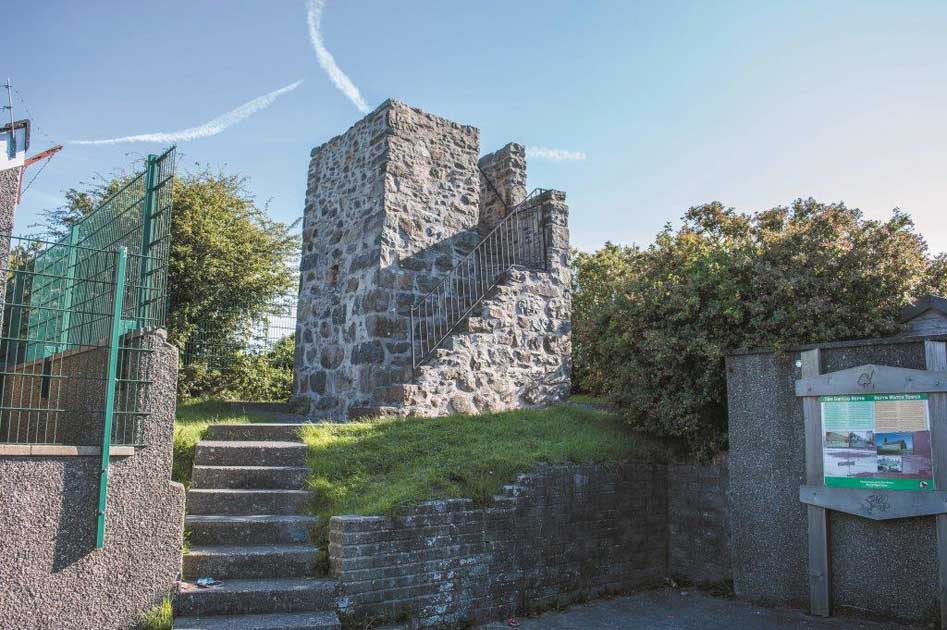Nefyn Motte

Nefyn Motte Details
Nefyn Motte, e/w of mutilated motte with C19 watch tower on top, surrounded by village
- Closest To: Nefyn, Pwllheli
- Access: Free Public Access
- Grid Reference: SH307406
Nefyn Motte is a much mutilated motte sitting within the village of Nefyn on the Llyn peninsular in north Wales. Originally about 17 metres across the base, the motte was about 3 metres high with a summit area about 12 metres across, but the mound has been cut away and public toilets installed on the west side. The north side has also been landscaped by the construction of a terrace and revetment. A watch tower was constructed on the top of the motte in the 19th century, probably in connection with the herring industry of the time. There is no evidence to suggest whether there was ever a bailey here, and the area would be covered by housing in any case, but the location near to the church is suggestive of a planned nuclear settlement in which a bailey might be expected.
Nefyn was known as a port in the 1090s, and there was a settlement and priory here in the 1180s. Burgesses of the town were mentioned as early as 1212, meaning there was a prosperous settlement here. It was the location for one of the llysoedd of the princes of Gwynedd, and it has been stated by two well-respected academics (Stephenson and Smith) that the llys at Nefyn was a fortified centre, although I am not sure what the evidence for this is. Across other parts of Gwynedd there is a strong correspondence between the presence of a llys and the presence of a motte, so we should perhaps presume that the motte is representative of this princely site. It may also be of importance that Edward I held a great tournament at Nefyn in 1284 after his defeat of the princes of Gwynedd, that court buildings were repaired here in 1306, and that Nefyn was acquiring all the hallmarks of a successful maerdref settlement. In 1284 there were fifty households in the town, and there was an obligation to “keep clean the precincts of the manor house”, and by 1293 there were 93 taxpayers. In the 1306/07 sheriff’s account the manor contained “a great barn, a small hall, with it’s chamber and private chamber next to the King’s Chamber, and to the gallery of the solar” which indicates a fairly significant structure, of which the motte was almost certainly part. In all likelihood this lay to the south of the motte, near land known as “Gadlis” (-lis approximating to llys) between 1566 and the 1840s, although this is well south of the motte. Up until the Glyndwr rebellion, when the town was burned, the settlement prospered, but after this it fell into decline and the former court buildings probably fell out of use.
Become a supporter of my work to access a more detailed history